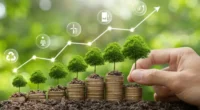Why an Emergency Fund Matters
Financial Safety Net Essentials
An emergency fund is a cash reserve for unexpected expenses like medical bills, car repairs, or job loss, ensuring financial stability without relying on debt. In 2025, with inflation at 3.2% and rising costs—U.S. median rent up 7% to $2,100, per Zillow—having a dedicated fund is critical. It prevents high-interest credit card debt, averaging 22% APR, and provides peace of mind during economic uncertainty.
Standard Savings Recommendations
The 3-6 Month Rule
Financial experts recommend saving 3-6 months’ worth of living expenses, tailored to your situation. Single earners or those in volatile industries, like gig work (15% of U.S. workers in 2024, per BLS), may need 6-12 months. Stable dual-income households might suffice with 3 months. For a $4,000 monthly budget, aim for $12,000-$24,000, adjusting for lifestyle and dependents.
Factors Influencing Your Fund Size
Personalizing Your Target
Calculate your fund based on essential expenses: housing, utilities, food, transportation, and insurance. Exclude discretionary spending like dining out. In 2025, average U.S. household expenses are $5,600 monthly, per Bureau of Economic Analysis. High-cost areas (e.g., San Francisco, 20% above average) or medical needs increase targets. Self-employed individuals should add 20-30% for income variability.
Steps to Calculate Your Fund
Simple Formula for 2025
List monthly essentials: rent ($2,100), utilities ($300), groceries ($500), transport ($400), insurance ($200)—totaling $3,500, for example. Multiply by 3-6 months ($10,500-$21,000). Factor in job stability; if in tech (8% layoff rate in 2024, per Layoffs.fyi), lean toward 6 months. Use online calculators like NerdWallet’s to refine estimates, accounting for local costs and inflation.
Building Your Emergency Fund
Practical Saving Strategies
Start small, saving $500-$1,000 for minor emergencies, then scale up. Automate monthly transfers to a high-yield savings account (4.5% APY in 2025, per Bankrate) to grow funds faster. Cut non-essentials, like subscriptions ($200/month average, per Rocket Money), redirecting savings. Side hustles, with 45% of Americans earning $1,000 monthly extra (2024, Upwork), can accelerate progress.
Where to Keep Your Fund
Safe and Accessible Options
Store your emergency fund in liquid, low-risk accounts like high-yield savings or money market accounts, offering 4-5% returns versus 0.5% in standard savings, per FDIC. Avoid stocks or crypto due to volatility—Bitcoin dropped 20% in Q1 2024. Ensure FDIC insurance up to $250,000. Split funds across two accounts for quick access if one bank faces technical issues, as seen in 2023 outages.









